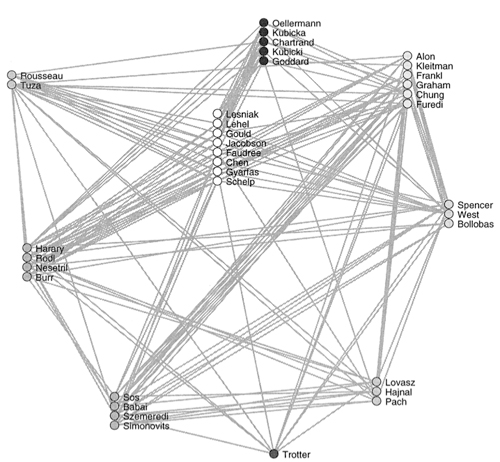This site claims that the diameter of the Erdös component of the collaboration graph in 2004 was 23. What is it now? Is it increasing or decreasing with time? Recall that the vertices of the collaboration graph are mathematicians and two vertices are connected if the mathematicians co-author a paper. MathSci allows one to find the collaborative distance between any two mathematicians. So in principle one can find the diameter just by using MathSci. In general (and more seriously) is there a mathematical theory which describes the growth of "real life" networks like the collaborative graph?
Update 1 A process that I had in mind is something like this. At every step one of the following things can happen.
A new vertex $a$ is born with some probability $p$. Usually that vertex is a "student" of some other vertex $x$. We can connect $a$ and $x$ by an edge.
A randomly chosen vertex $y$ gets connected with a randomly chosen vertex $z$. But the probability for choosing $z$ is not uniform. Those vertices that are closer to $y$ have more chances getting connected to $y$.
A randomly chosen vertex "dies" (with some probability $q$) meaning it does not participate in new edges any longer.
Update 2. Many thanks to Balazs and Joseph for their answers. But the first question still remains: what is the diameter of the Erdös component now?

